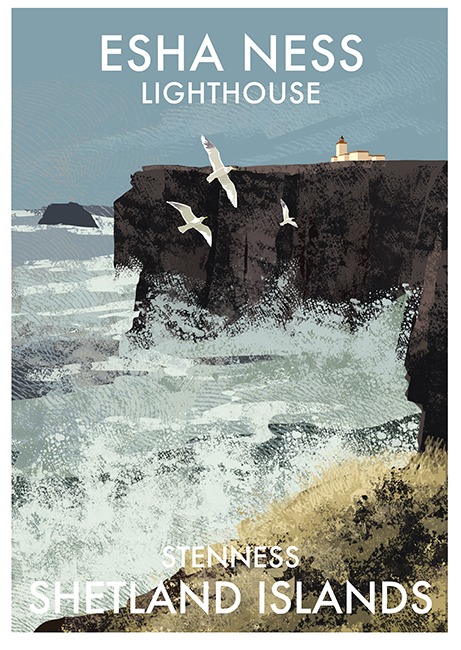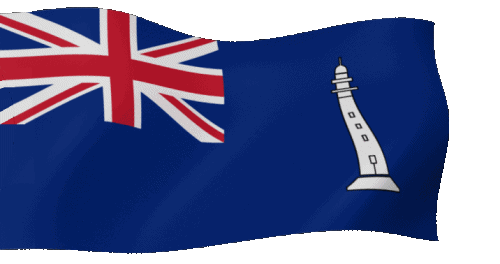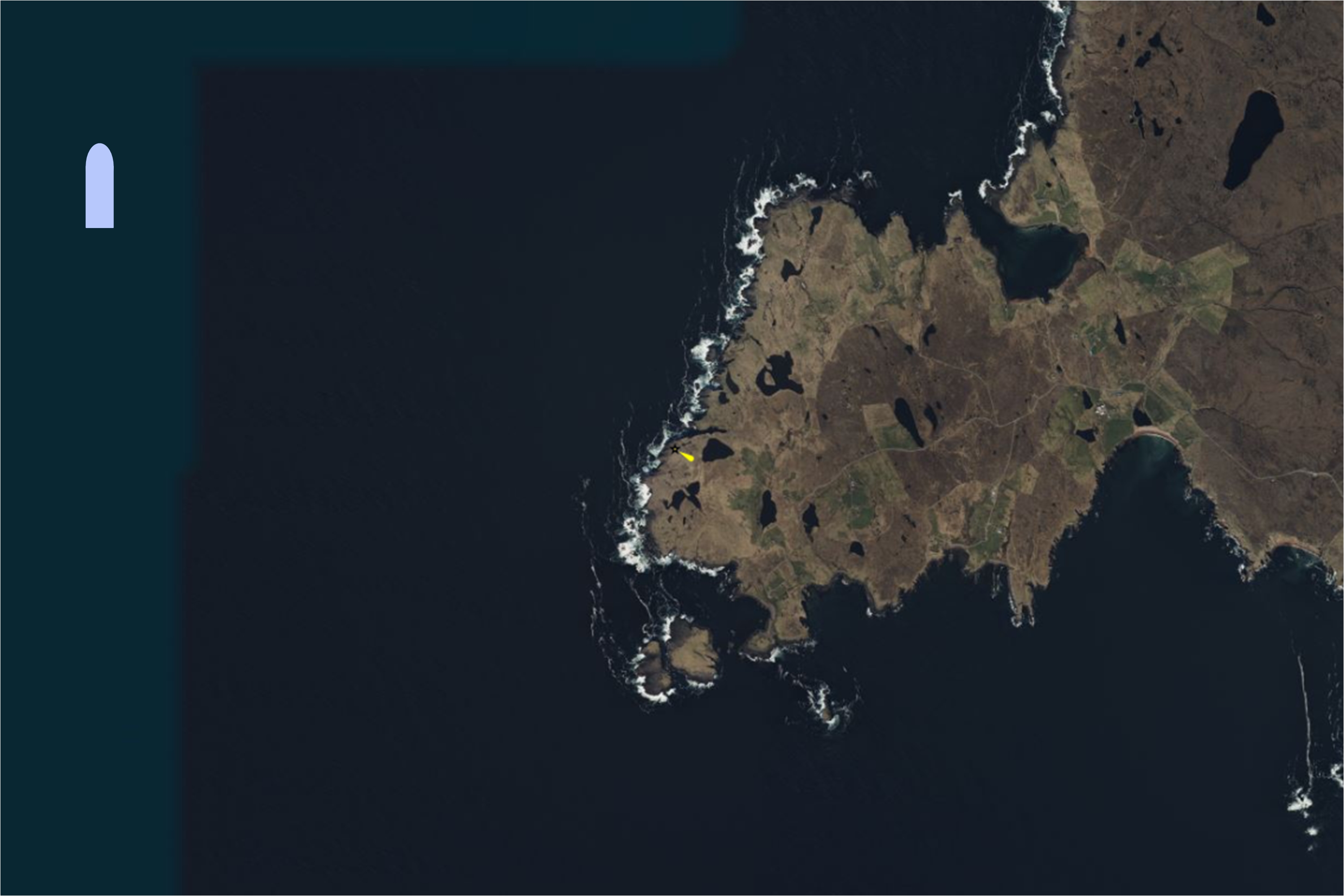
Place of the lighthouse
Building of the Lighthouse
Warning systems (Light, Fog horn, Radar Beacon)
1/11/1974 Stone Platt Power Beam Beacon 1982 PRB21A Sealed Beam
Operational status
Information about the lighthouse specific
Additional information
Description David A and Charles Stevenson, 1929. Lighthouse complex comprised of 3-stage battered square tower to N end of single storey, 4-bay flat- roofed principal building; additional single storey 4-bay building aligned to S, and 2-stage oil tank to N. Harled walls with painted dressings. Base course, margined doors and windows with projecting cills. PRINCIPAL BUILDING AND TOWER: TOWER; intersecting NW corner of principal building; single storey flat-roofed entrance porch at ground and projecting E; windows in W and N sides, and door to E elevation. 2-pane windows at 2nd and 3rd stages of N and E elevations respectively. Band course at eaves with railing on wallhead enclosing polygonal lantern with triangular-paned glazing and pyramidal dome with ventilator at apex. E (ENTRANCE) ELEVATION: asymmetrical, 4 bays grouped 1-2-1, regular fenestration in outer bays, door and window flanking centre at left and right respectively. S ELEVATION: 2-bay asymmetrical elevation with door at left and window at right in bay to left; regular fenestration in bay to right. W ELEVATION: tower and entrance porch to outer left, 3-bay regularly fenestrated elevation to right with additional narrow window to outer right. S BUILDING: linked by wall on W side. E ELEVATION: asymmetrical 3-bay elevation; doors in centre and left bays, additional door between centre bay and fenestrated right bay. W ELEVATION: asymmetrical 4-bay elevation, regularly fenestrated except for smaller window offset to right in bay to left of centre. Mainly 12 and 8-pane timber sash and case windows, vertically-boarded timber doors. Cast-iron ogee gutters and downpipes with semi-octagonal hoppers and decorative brackets. Harled stacks to principal building, coped, with circular cans. OIL TANK: rectangular harled base with doors in S side; panelled metal tank above. SUNDIAL: bollard-like cast-iron plinth to sundial (now gone 1996), sited opposite entrance door. GATES: vehicular and pedestrian wrought-iron gates with ball-finialled stanchions. Statement of Special Interest A prominently sited building in this dramatically scenic area. The unusual square plan of the tower was an economy measure as it dispensed with the need for curved fittings. This is an extract from the book Scottish Lighthouses by Sharma Krauskopf, a former owner of the keepers cottage at Esha Ness Lighthouse. A temporary light powerful enough to give warning of the Ve Skerries eight and half miles offshore was erected in 1915 on the Eshaness peninsula on the north-west coast of mainland Shetland. The light was an iron tower, containing a lantern, machinery and an acetylene generating plant, and was constructed in about two months. The building materials reached the remote location by pony and cart once they arrived on the Shetland Islands. The temporary light was torn down after World War One. The current Eshaness Lighthouse was built in 1929. (Position on the Nautical Chart is 60° 29.3’N, 1° 37.6’W.). It was the last Northern Lighthouse Board manned facility designed by a member of the Stevenson family, David A. Stevenson being the engineer for the station. The 37 foot square tower sits on top of a 200 foot cliff. The beacon flashes white every 12 seconds and in 1974 the candlepower was increased to 46, 500 to give the light a nominal range of 25 miles. The small house was home to only one keeper, which was unusual in that most manned facilities had three keepers. At Stenness, the site of a former fishing station sheltered by Stenness Isle, is a stone cross erected by the Commissioners for Northern Lighthouses in 1927, to mark the spot where supplies for the Eshaness Lighthouse were landed. Eshaness did not prove to be totally effective in keeping vessels away from the Ve Skerries. The Aberdeen trawler Ben Doran was wrecked in the area soon after the lighthouse was built and all hands were lost. Due to heavy oil-tanker traffic bound to and from Sullom Voe, a lighthouse was built on the Ve Skerries in 1979. Eshaness was used as the construction site for the Ve Skerries light.
Esha Ness Lighthouse is situated on the Northmavine peninsula in the north-west of the Shetland Islands, Scotland. It sometimes rendered as Esha Ness Lighthouse.
The lighthouse has a tapering, square tower 12 meters (39 ft) high and was built by David Alan Stevenson, one of the famous 'lighthouse' Stevensons, between 1925 and 1929. It was built from concrete because of the unsuitability of local stone. It flashes white every 12 seconds and has a nominal range of 25 nautical miles (46 km). The light was automated in 1974 and the former lighthouse keepers' accommodation now serves as holiday accommodation. It is owned by the Shetland Amenity Trust. This is an extract from the book Scottish Lighthouses by Sharma Krauskopf, a former owner of the keepers cottage at Esha Ness Lighthouse. A temporary light powerful enough to give warning of the Ve Skerries eight and half miles offshore was erected in 1915 on the Eshaness peninsula on the north-west coast of mainland Shetland. The light was an iron tower, containing a lantern, machinery and an acetylene generating plant, and was constructed in about two months. The building materials reached the remote location by pony and cart once they arrived on the Shetland Islands. The temporary light was torn down after World War One. The current Eshaness Lighthouse was built in 1929. (Position on the Nautical Chart is 60° 29.3’N, 1° 37.6’W.). It was the last Northern Lighthouse Board manned facility designed by a member of the Stevenson family, David A. Stevenson being the engineer for the station. The 37 foot square tower sits on top of a 200 foot cliff. The beacon flashes white every 12 seconds and in 1974 the candlepower was increased to 46, 500 to give the light a nominal range of 25 miles. The small house was home to only one keeper, which was unusual in that most manned facilities had three keepers. At Stenness, the site of a former fishing station sheltered by Stenness Isle, is a stone cross erected by the Commissioners for Northern Lighthouses in 1927, to mark the spot where supplies for the Eshaness Lighthouse were landed. Eshaness did not prove to be totally effective in keeping vessels away from the Ve Skerries. The Aberdeen trawler Ben Doran was wrecked in the area soon after the lighthouse was built and all hands were lost. Due to heavy oil-tanker traffic bound to and from Sullom Voe, a lighthouse was built on the Ve Skerries in 1979. Eshaness was used as the construction site for the Ve Skerries light.


 Update: 01-03-2025
Update: 01-03-2025




